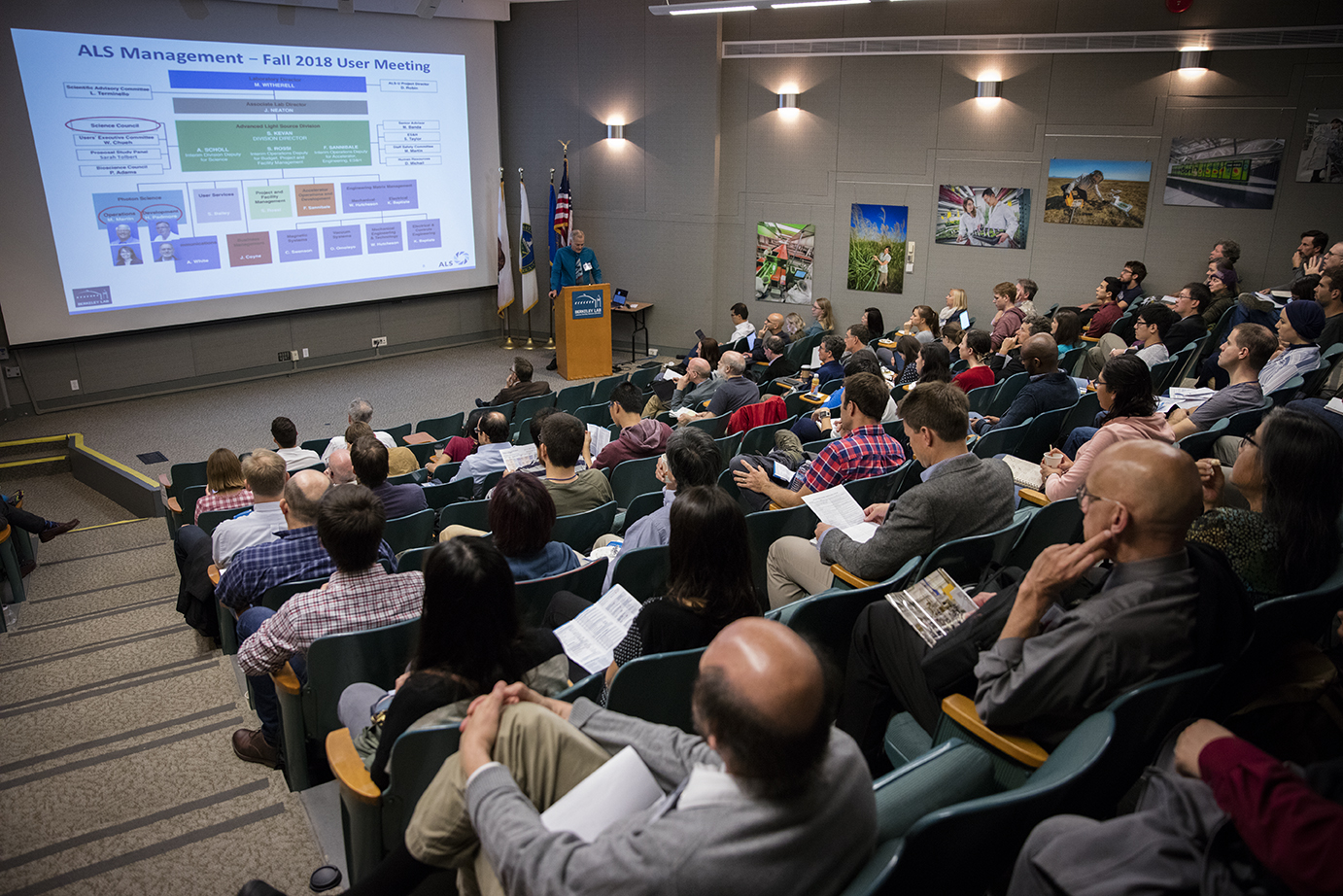
by Lori Tamura
Past, present, and future converged at the ALS User Meeting, held October 2–4, 2018. About 480 registrants helped celebrate the 25th anniversary of first light at the ALS and the announcement of CD-1 approval for the ALS Upgrade project (ALS-U), a major federal milestone. Users’ Executive Committee (UEC) Chair Will Chueh kicked things off by acknowledging the organizers—UEC members Jennifer Ciezak-Jenkins, Alex Frañó, and Michael Jacobs—and thanking the ALS for its support. He also explained the organizing principle behind the program: to engage student and young-scientist users and strengthen interactions between users in general. Jeff Neaton, Berkeley Lab’s Associate Laboratory Director for Energy Sciences, then extended an official welcome to attendees. He noted that it’s been an exciting year for the ALS, which gained a new director, Steve Kevan, in addition to CD-1 approval for ALS-U.
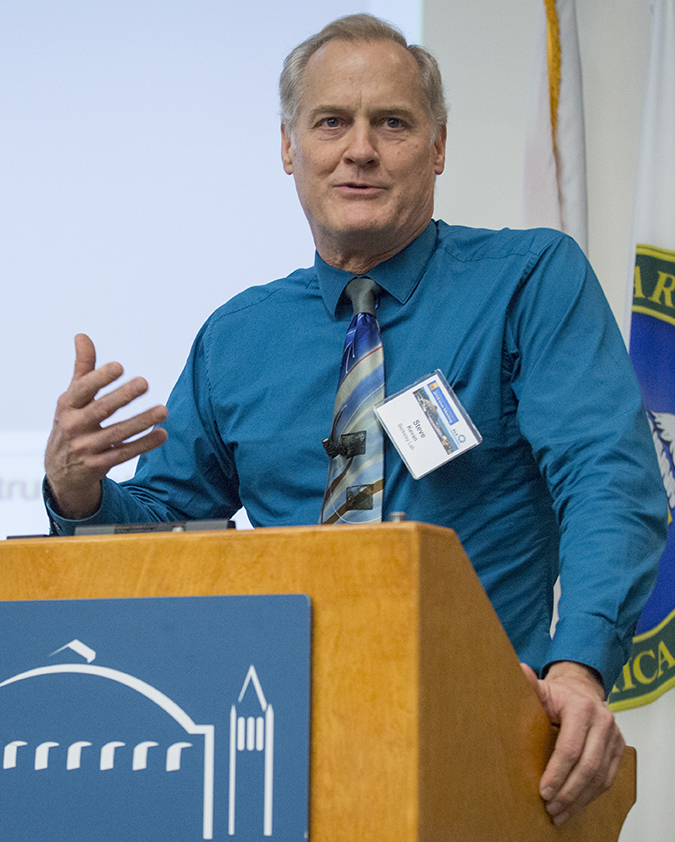
Up next, Kevan said that he was honored to be director of such an innovative place and that his goal is to help the ALS have the same major impact on users’ careers as it has had on his own. He provided updates on various aspects of the ALS, including the reorganization of the Experimental Systems and Scientific Support groups into one Photon Sciences group, encompassing technique-oriented programs and instrument development, and the establishment of scientific thrust areas and a Science Council, which will seek opportunities for cross-disciplinary collaboration and advise ALS management on strategy.
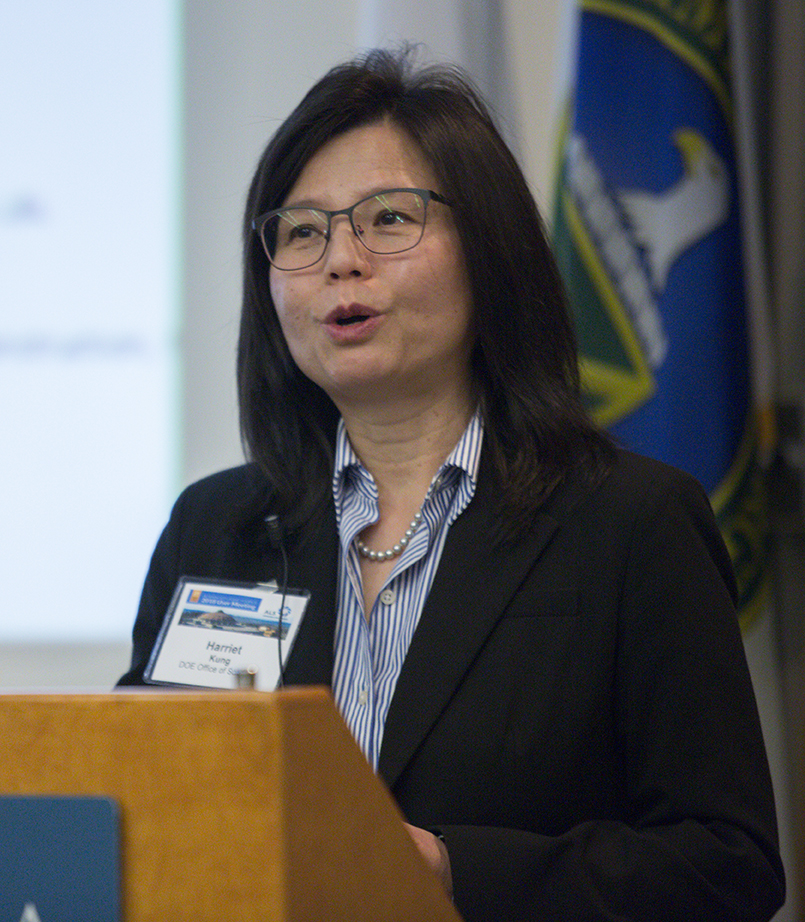
Harriet Kung, Associate Director of Science for the U.S. Department of Energy (DOE) Basic Energy Sciences (BES) program, brought positive budget news. For the first time in 20 years, the 2019 Energy and Water Appropriations bill (which funds DOE) was enacted before the start of the fiscal year. It provides for a sizable increase in funding, allowing BES to support many priorities, including ALS-U, which will receive $62 million to move forward. Kung offered praise to the ALS-U team for achieving CD-1 in almost record time and for being ready when the window of opportunity opened.
Following a lively UEC town hall meeting, the morning session continued with a presentation by John Hill (Director, NSLS-II), who discussed trends in synchrotron science. He envisioned a future in which we will be looking at dynamic, heterogeneous systems in 3D, using automated, operando, multimodal experiments producing gigabytes (or terabytes) of data, analyzed with the help of machine learning.
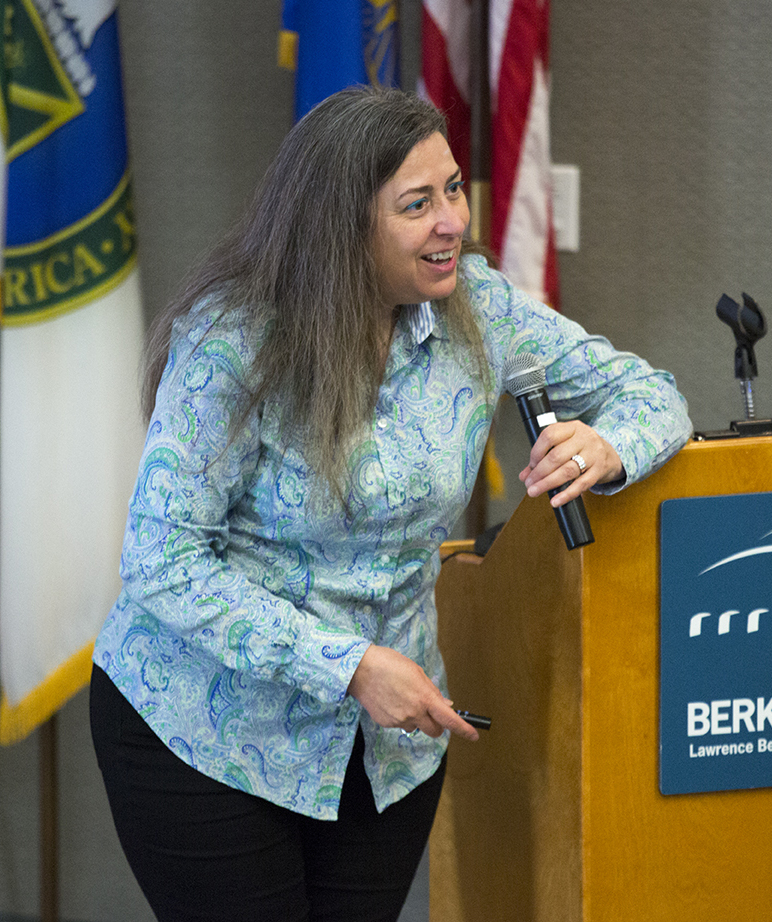
Speaking next was Pupa Gilbert (Univ. of Wisconsin–Madison), this year’s winner of the David A. Shirley Award for Outstanding Scientific Achievement at the ALS for her “development of polarization-dependent imaging contrast mapping to image the orientation of carbonate nanocrystals in marine biominerals.” In addition to describing what PIC mapping can do, she shared some exciting new results about the growth of spherulitic crystals in coral skeletons from “sprinkles”—small, randomly oriented crystal grains that resemble candy sprinkles on a cupcake.
Paul Adams (Director, Molecular Biophysics and Integrated Bioimaging Division, Berkeley Lab) rounded out the morning with a review of bioscience research at the ALS, which accounts for about 25% of ALS users. These users apply a wide variety of methods, including soft x-ray tomography, small-angle x-ray spectroscopy, infrared spectromicroscopy, and protein crystallography.
The afternoon talks began with Megan Beers (TE Connectivity), who talked about x-ray microtomography of composite materials that combine the properties of metals (conductivity) with those of plastics (lightness, flexibility, processability). Next, Jay Marx (Caltech/LIGO) told the story of how the ALS came to be and how numerous challenges were overcome to successfully construct the facility with the active support of the user community. Zahid Hussain (Berkeley Lab) then gave a history of the high-impact ALS science aimed at understanding how interacting degrees of freedom (charge, spin, orbit, and lattice) result in emergent phenomena.
In the final session of Day 1, John Spence (Arizona State Univ.) talked about time-resolved imaging of protein dynamics (enzyme catalysis, for example, which occurs on the millisecond time scale) and how such experiments might be done at the upgraded ALS. Alessandra Lanzara (UC Berkeley/Berkeley Lab) followed with a talk summarizing how angle-resolved photoemission spectroscopy has helped us understand quantum materials, from superconductors to topological insulators. The day concluded with a highly entertaining student poster slam, poster session, and reception, where attendees could interact with the 32 on-site exhibitors of synchrotron-related equipment.
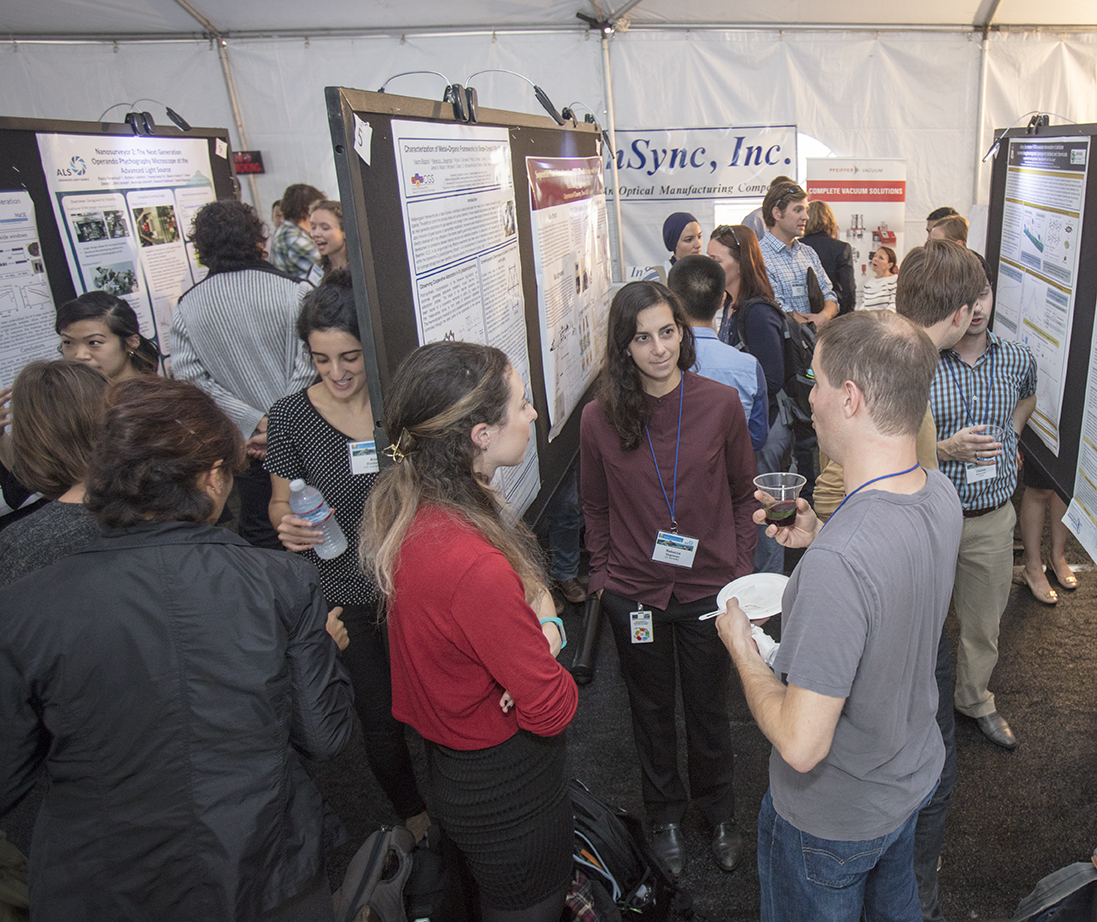
Day 2 was primarily dedicated to workshops and tutorials. In an evening plenary session, Charles Schurman (UCSF), winner of the Neville V. Smith Award (1st place in the student poster competition), gave a talk on his poster, “Osteocytes may be responsible for compounding bone quality defects in age and chronic kidney disease.”

ALS-U Project Director Dave Robin followed with a talk about the tremendous effort that went into getting ALS-U to CD-1 and what comes next: establishing the project’s scope, cost, and schedule in the preliminary design phase leading to CD-2. Andreas Scholl, ALS Interim Division Deputy for Science, closed out the session with a description of the process for selecting which beamlines will be upgraded or built as part of the ALS-U project.
At the awards dinner, the Klaus Halbach Award for Innovative Instrumentation at the ALS was awarded to David Shapiro, Rich Celestre, Kasra Nowrouzi, Bjoern Enders, Young-Sang Yu, Lee Yang, Hari Krishnan, Stefano Marchesini, and the Science IT-HPCS group led by Susan James, for “the development of the microscopy endstation at the COSMIC beamline, featuring an ultra-stable x-ray microscope, computational methods for data reconstruction, and a high-speed data acquisition system.” Bob Gassaway was announced as the Tim Renner User Services Award winner for “his longstanding commitment to simultaneously supporting the ALS user community and advancing electrical safety at the ALS.” Pupa Gilbert and Charles Schurman also received their awards, along with Miela Gross and Connor Yen (both of UC Berkeley), who tied for third place in the student poster competition. Jenn Nill (UC Davis), who could not attend the dinner, placed second.
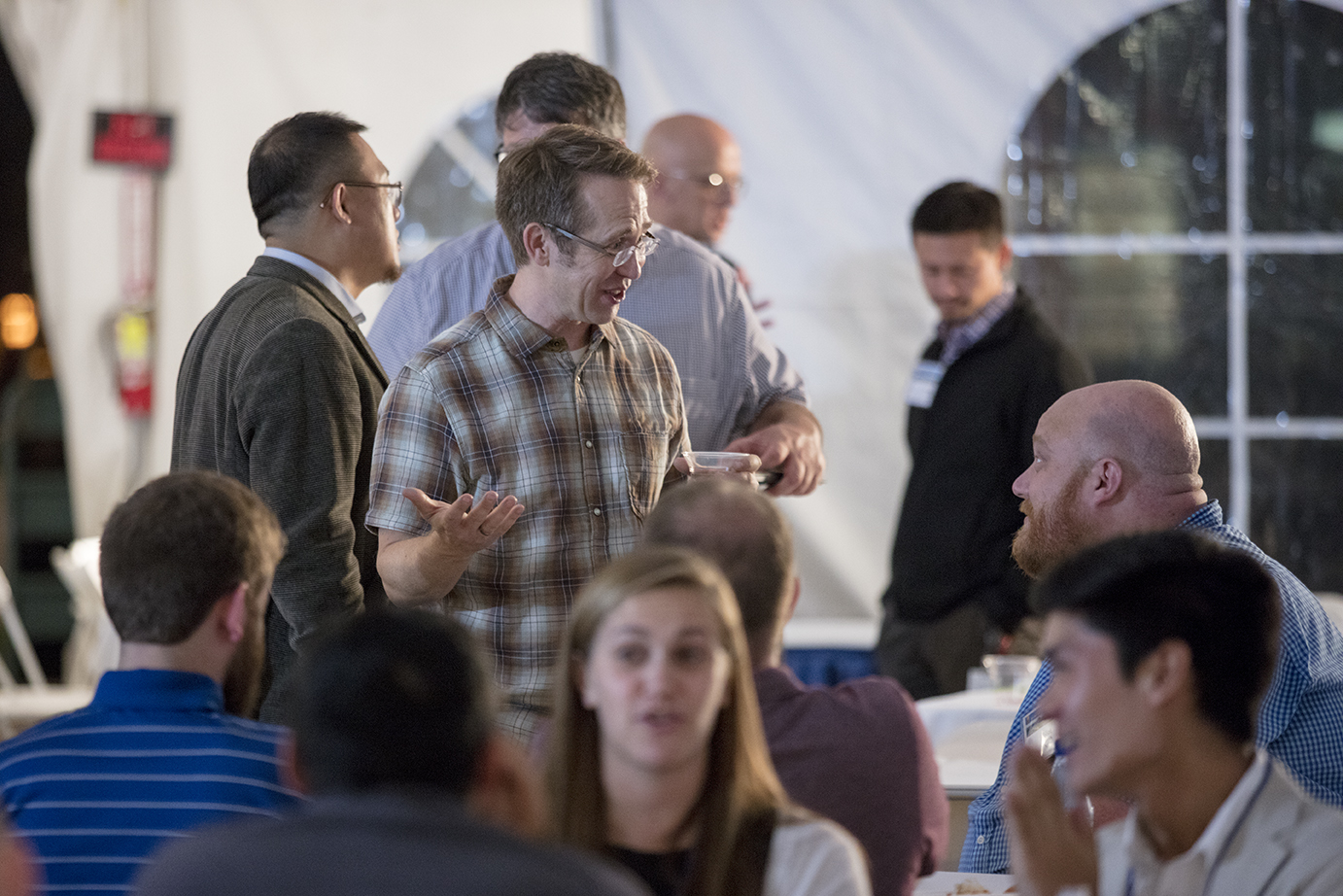
Day 3 was fully dedicated to workshops and tutorials. In particular, a new tutorial entitled “Light Sources 101: An Introduction to the World of Experiments at the ALS,” drew large audiences throughout the day. Organized by Monika Blum (ALS) and Fanny Rodolakis (Argonne National Laboratory), the tutorial offered a broad overview of ALS science, with modules on photoemission, spectroscopy, scattering, and imaging. It was such a great success that organizers are considering expanding the tutorial to two days, or splitting participants into groups based on interest and incorporating more hands-on instruction at the beamlines. Overall, the infusion of young scientists along with the celebration of past achievements and anticipation of future opportunities made for a refreshing meeting with great energy and enthusiasm.
